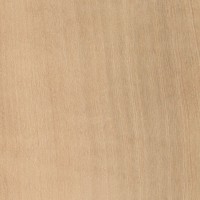 |
Common Name(s): Madrone, Pacific Madrone Scientific Name: Arbutus menziesii Distribution: Western coast of North America Tree Size: 50-80 ft (15-24 m) tall, 2-3 ft (.6-1.0 m) trunk diameter Average Dried Weight: 50 lbs/ft3 (795 kg/m3) Specific Gravity (Basic, 12% MC): .58, .79 Janka Hardness: 1,460 lbf (6,490 N) Modulus of Rupture: 10,400 lbf/in2 (71.7 MPa) Elastic Modulus: 1,230,000 lbf/in2 (8.48 GPa) Crushing Strength: 6,880 lbf/in2 (47.4 MPa) Shrinkage: Radial: 5.6%, Tangential: 12.4%, Volumetric: 18.1%, T/R Ratio: 2.2 |
Color/Appearance: Color tends to be a cream or pinkish brown color, but can also have dark red patches. Madrone is known for its burl veneer, which has many closely-packed clusters of knots and swirled grain.
Grain/Texture: Grain tends to be straight, with a very fine and even texture.
Endgrain: Semi-ring-porous or diffuse-porous; solitary and radial multiples; small pores in no specific arrangement, very numerous; heartwood deposits occasionally present; parenchyma absent; narrow to medium rays, normal spacing.
Rot Resistance: Madrone is rated as non-durable to perishable with regard to decay resistance.
Workability: Madrone is easy to work with machine and hand tools, and compares similarly to Hard Maple in working characteristics. The wood can be difficult to dry, and has a tendency to warp or twist. Madrone is an excellent turning wood, and also takes stains and finishes well. However, water-based glue joints should be thoroughly dry before further machining to avoid subsequent sunken glue lines.
Odor: No characteristic odor.
Allergies/Toxicity: Besides the standard health risks associated with any type of wood dust, no further health reactions have been associated with Madrone. See the articles Wood Allergies and Toxicity and Wood Dust Safety for more information.
Pricing/Availability: Madrone is most often sold as burl veneer, which tends to be quite expensive. Madrone lumber, if available, is also expensive for a domestic wood species, easily costing more than other premium domestic hardwoods such as Cherry or Walnut: its price is likely to compare similarly to Myrtle, another Pacific-coast hardwood.
Sustainability: This wood species is not listed in the CITES Appendices or on the IUCN Red List of Threatened Species.
Common Uses: Veneer, turned objects, and other small specialty objects.
Comments: Madrone burl is highly prized as a decorative veneer, while Madrone lumber is a very dense and finely-grained hardwood that’s similar in appearance to fruitwoods. The wood burns long and hot, and as a result it is also used for firewood and charcoal.
Madrone’s botanical species name, menziesii, is in honor of Scottish botanist Archibald Menzies, who discovered the tree in 1792 during the George Vancouver Expedition—his name is also applied to Douglas-fir (Pseudotsuga menziesii).
None available.
Scans/Pictures: A special thanks to Steve Earis for providing the burl veneer sample of this wood species.


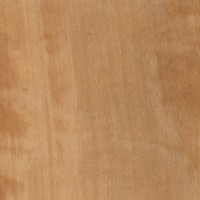
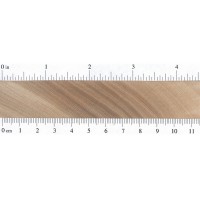
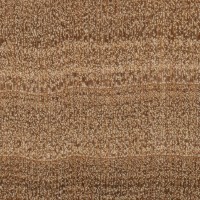
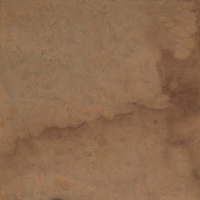




Makes great violin accessories.
Warps wonderfully if turned green. In a bowl incised details or beads flow in waves following the warped exterior. The trick is to avoid cracking. To that end I stuff green turnings into a sealed paper bag and forget about it for 6-12 months.
Do you know if a long straight branch would be a good walking stick? Or battlefield lance?
No, a much better one would be a Yew limb. Find one that is partially rotted off Oakwood! It will be lightweight and Very Very almost Unbreakable!!!
David and all, I am just at the very early stages of trying to learn how to turn wood and am fascinated by your comments regarding turning Pacific Madrone. I have a couple of the trees on my property and will most likely be trimming off some of the branches that are potentially hazardous to near by structures. As a wood turner, do you think a true novice like me should attempt to turn a piece of madrona or should I gain a whole lot of experience first? Also, it sounds like it is best to turn the wood when… Read more »
You can wait to turn it dry and it won’t move much but to take advantage of radical movement in this material turn it green. I have mitigated CRACKING by using the brown bag method or by submerging in alcohol for a couple of days. Limb wood is notorious for “tension” in the grain but give it a shot. Thin turned work seems to warp quite nicely and unexpectedly. Turn some grooves or beads into your work and see what happens.
Madrona has an appetizing sweet fruity smell when green. It’s powerful–lasting in my car for several days after shuttling some rounds.
One of my favourite woods to turn. Oiled, it turns a lustrous redish brown.
I have worked with this wood a bit and always thought the smell was sweet like bubblegum when I cut into it :)